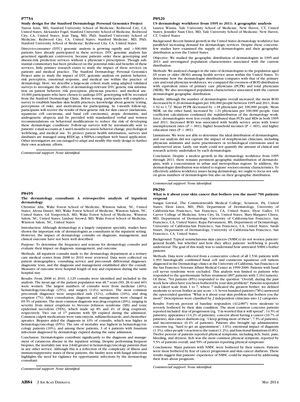US Dermatology Workforce from 1995 to 2011: A Geographic Analysis
May 2014
in “
Journal of The American Academy of Dermatology
”

TLDR The number of dermatologists in the US increased from 1995 to 2011, but they were unevenly distributed, mainly in urban areas, and areas with higher income and education levels.
The study titled "US dermatology workforce from 1995 to 2011: A geographic analysis" investigated the distribution of dermatologists across the United States over a 16-year period and examined the association between dermatologist distribution and population characteristics. The study found that despite an overall increase in the number of dermatologists, the mean ratio of dermatologists to the population aged 65 years or older (ROD) decreased from 1.92 to 1.72 per 100,000 people between 1995 and 2011. The distribution of dermatologists was less even than that of primary care physicians and total physicians, with a higher concentration of dermatologists in urban and metropolitan areas. Higher ROD was associated with health service areas that had lower unemployment rates, higher household incomes, and higher education rates. The study concluded that there is a persistent geographic maldistribution of dermatologists, which is related to the socioeconomic characteristics of regions, and that addressing dermatology workforce issues requires focusing on both the number and geographic distribution of dermatologists.